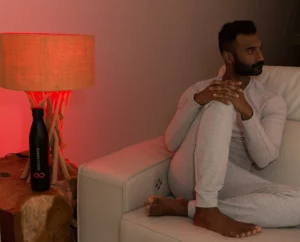
THE BIOHACKING COMMUNITY cannot stop talking about one of the hottest topics in biohacking—red light therapy. Even though so many light-touch wellness consumers are purchasing red light therapy devices to use at home—mostly for its profound collagen-boosting, healing benefits for the skin— few actually know what red light does, why it's so important for our longevity, and what it's counteracting in our day-to-day lives.
Andy Mant, CEO & Founder of Bon Charge, wants us to go deeper than just talking about the benefits of red light therapy, and instead, focus on why we need this healing light therapy in the first place. Enter: blue light.
Given that we have more screens and are spending less time outside more than ever before, exposure to blue light is at an all-time high. While seemingly innocuous, blue light can actually be a detriment to our health in the long-term. We spoke with Mant to learn more about how we can combat the negative effects of artificial light when modern-day demands aren't going anywhere anytime soon, and let us just say: what you can see can hurt you.
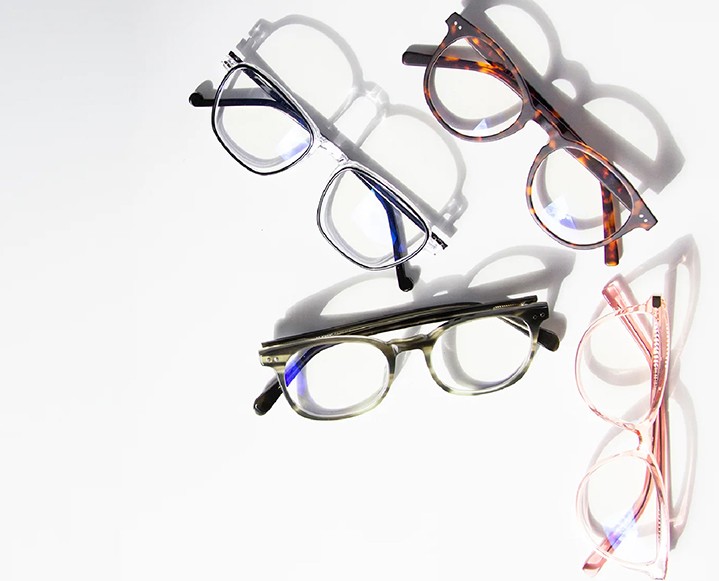
The Blue Light Blues
CAN YOU EXPLAIN WHAT BLUE LIGHT IS? WHERE DOES IT COME FROM? Blue light is part of the visible light spectrum – what the human eye can see. Radio waves, microwaves, X-rays, and other kinds of light are also part of the electromagnetic spectrum, but visible light is the only part of it human eyes can see.
Blue light is vibrating within the 380 to 500 nanometer range—it has the shortest wavelength and highest energy. About one-third of all visible light is considered blue light. The largest natural source of blue light is sunlight, but then you have artificial sources of blue light that include fluorescent light, LED TVs, computer monitors, smartphones, and tablet screens.
WHAT IS THE OG PURPOSE OF BLUE LIGHT? The sun is basically the "OG" blue light. Sunlight is important for growth and development of the eyes. In-direct sunlight boosts alertness, helps memory and brain function, and elevates your mood. As the sun goes down, it also acts as a little reminder—for your body's sleep cycle—that it is time to go to bed. So, its day-to-day purpose stands as something to help regulate your circadian rhythm and sleep-wake cycle.
HOW ARE WE GETTING BLUE LIGHT ON A DAY-TO-DAY BASIS? Every single day we are exposed to blue light in some way, shape, or form. The largest source of blue light comes from the sun, but blue light is also coming from your computer screen at work, your mobile phone while you are scrolling on Instagram, and your TV while watching your favorite show. Some people are even consuming multiple screens at the same time. These secondary sources of blue light are what we are concerned about due to the close proximity of the screens, length of time we use them, and the fact we are using them every day.
WHAT IS THE IMPACT OF BLUE LIGHT ON THE BODY? Our eyes are simply not good at blocking blue light, so nearly all visible blue light goes straight through to the retina, pssing the cornea and lens. Constant exposure to blue light over time can damage retinal cells and cause vision problems such as age-related macular degeneration. Blue-light exposure at night can disrupt melatonin production and negatively impact our sleep-wake cycles.
All around us, we see the damage of artificial blue light and consider children more at risk than adults because their eyes actually absorb more blue light from digital devices. If you are experiencing symptoms like dry eyes, tearing eyes, blurred vision, headaches, tired eyes and irritation, or soreness, you might want to check how much blue light you are consuming.
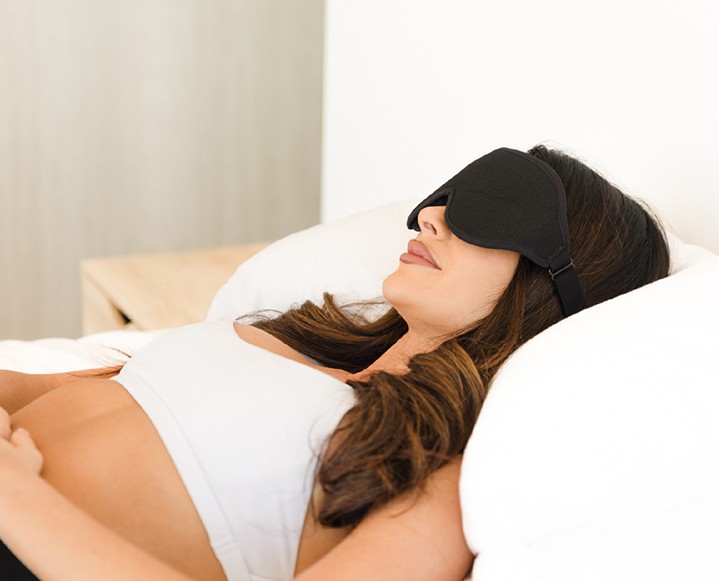
WHAT ARE SOME WAYS THAT BLUE LIGHT IS AFFECTING US AND WE DON’T EVEN KNOW IT? A big one people don’t always realize is that when we are doom-scrolling or in our focus hour at work, we blink less! This is a huge contributor to dry eyes and eye strain. So, by the end of the day, you have a headache, and your neck and shoulders probably hurt too. This is when daytime blue light-blocking glasses come in handy.
Blue light is also decreasing the amount of deep and REM sleep we are having, increasing insulin resistance and causing us to feel more stressed. Despite what some clinics may say, blue light also ages the skin quicker, whereas using red light helps to make us look younger.
HOW DOES BLUE LIGHT AFFECT OUR SLEEP, HORMONES, AND OTHER BODILY SYSTEMS? Blue light affects our sleep and hormones deeply, and in many ways. Blue light disrupts our circadian rhythm because it tells the body to be awake and alert. It suppresses the body’s release of melatonin, which makes us feel drowsy. So, blue light when the sun goes down is unhelpful.
We want to make sure our circadian rhythms are in alignment with our environment, so when the sun goes down, we should put down our phones, avoid using overhead artificial lights, and tell our body, through repeated behaviors, that it is time for sleep. Exposure to blue light before bedtime also can disrupt sleep patterns, as it affects when our bodies create melatonin. We all know how we feel when we don’t get enough sleep. We are irritated, feeling unproductive at work and unable to concentrate.
WHAT ARE THE LONG-TERM EFFECTS OF BLUE LIGHT EXPOSURE? More studies are needed, but the World Health Organization (WHO) has classified blue-light exposure after dark, as a class 2 carcinogen. Too much blue light exposure can increase stress levels, which—in return—can lead to comfort eating and caving into cravings. Over time, we gain weight/unhealthy fat, which can be bad for our long-term health. Not only this, but blue light disrupting sleep can increase insulin resistance leading to issues such as weight gain, stress, and fatigue over time.
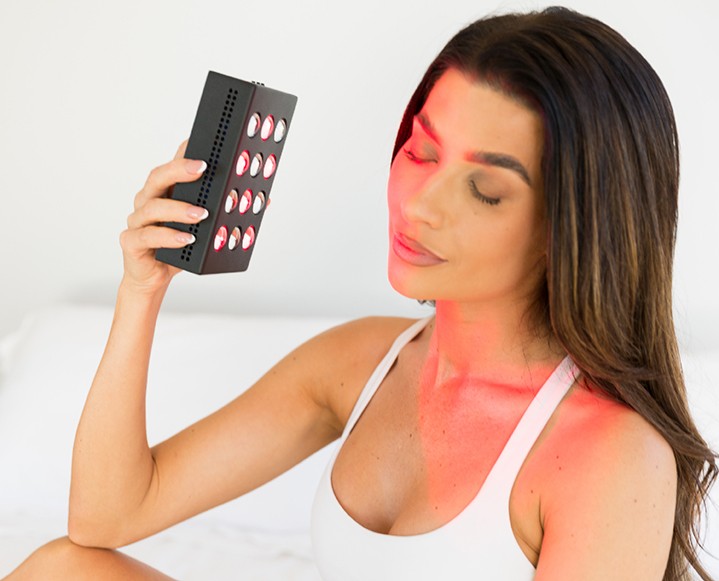
Turning A Blind Eye To Blue Light
WHAT ARE SOME WAYS, TIPS TO COMBAT BLUE LIGHT EXPOSURE?
+ Wear blue light-blocking glasses.
+ Install screen filters on your phone.
+ Install blue light blocking software.
+ Use low blue light or blue light blocking bulbs.
+ Sleep with an eye mask.
+ Wear blue light filter computer glasses during the daytime.
WHERE DOES RED LIGHT COME FROM, AND HOW CAN WE GET MORE OF IT? Along with blue light, red light also comes from the sun, but only at sunrise and sunset. To get more of this natural far and near infrared light, I would suggest slotting in time in the morning and evening to sit outside or go for a walk. Sun exposure at these times of the day is also great for improving your sleep later in the day. If you want to get more red light after dark, that’s when you bring in red light products.
WHAT ARE THE BENEFITS OF RED LIGHT? Red light improves our sleep and boosts recovery, as it aligns our circadian rhythm. As mentioned previously, the sun provides some red light, but in the winter months, or when it’s cloudy and raining, you can rely on red light therapy devices to keep that sleep cycle regular. It optimizes our cellular energy allowing the body to recover faster and keep cells healthy.
Red Light Therapy has positive benefits for more than just your sleep. RLT may help:
+ Improve skin appearance
+ Boost recovery
+ Help with stiff and sore muscles
+ Promotes wound healing
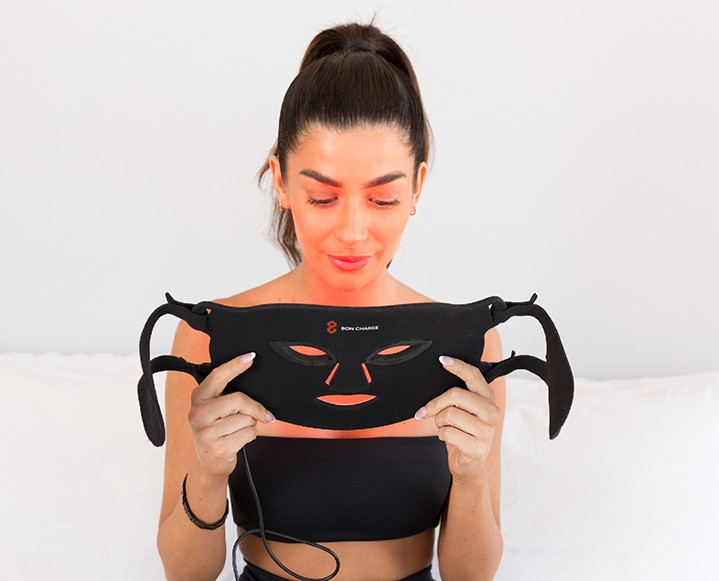
WHAT DOES RED LIGHT DO FOR OUR CELLS, HORMONAL SYSTEMS, SKIN, ETC? Red light from the sun helps to stimulate cellular rejuvenation, increase blood flow, stimulate collagen, and more. When we don’t have constant access to the sun, then we can shift our source from the sun to red light devices like red light panels or face masks.
Red light therapy works by stimulating ATP productions, making your body's energy system more efficient. This boost in cellular energy is then offset onto metabolic processing such as recovery and improving skin appearance.
WHAT ARE SOME BON CHARGE PRODUCTS THAT FACILITATE THIS CELLULAR HEALING PROCESS? We have a range of red light devices from small handheld devices to larger, full-body panels. Our red light panels are great for those wanting a full-body experience—the Max Red Light Therapy Device delivers >142 mw/cm2 and emits 660nm red light and 850nm near infrared-light.
In comparison, our Red Light Mini Device and Red Light Face Mask, Chest Mask, and Wand are for a more tailored and targeted experience. These products are equipped with the most optimal wavelengths of red (630nm) and infrared (850nm) light for the face and chest.
HOW SHOULD SOMEONE USE RED LIGHT AT HOME? The best option is to use any of our devices for 10-20 minutes per day to see consistent results.
All material on The Chalkboard Mag is provided for educational purposes only. Always seek the advice of your physician or another qualified healthcare provider for any questions you have regarding a medical condition, and before undertaking any diet, exercise or other health-related programs.
This story is brought to you in partnership with Bon Charge. From time to time, TCM editors choose to partner with brands we believe in to bring our readers special offers.
The post Macular Degeneration, Poor Circadian Rhythms + Extra Cortisol: The Truth Behind Too Much Blue Light Exposure appeared first on The Chalkboard.
from The Chalkboard https://ift.tt/2hjGoJu
via IFTTT

No comments:
Post a Comment